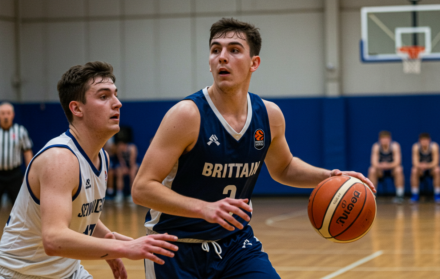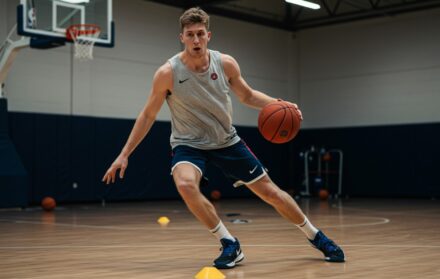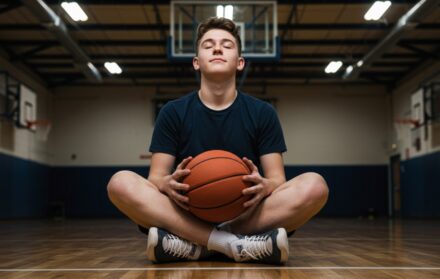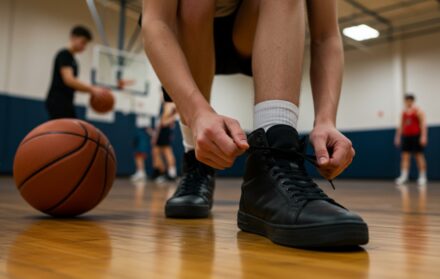
What Are the Main Basketball Positions and What Do They Do?
Basketball may look like chaos — ten players sprinting, dribbling, passing, and shooting in a blur of energy. But behind the speed and noise is structure. Each player has a position, a role that guides where they stand, what they do, and how they contribute.
These positions are not strict cages. Modern basketball often blurs them — you’ll see centres dribbling like guards or forwards firing three-pointers like shooting specialists. Still, understanding positions gives beginners a framework for learning the game. And while styles evolve, the foundation never changes: basketball rules and roles work together to keep the game flowing.
There are five traditional basketball positions: point guard, shooting guard, small forward, power forward, and centre. Together, they cover the floor from the backcourt to the paint. Knowing what each does helps new players see how a team fits together like a puzzle. It also gives you clues about which role you might enjoy most if you’re just starting out.
Point Guard – The Floor General
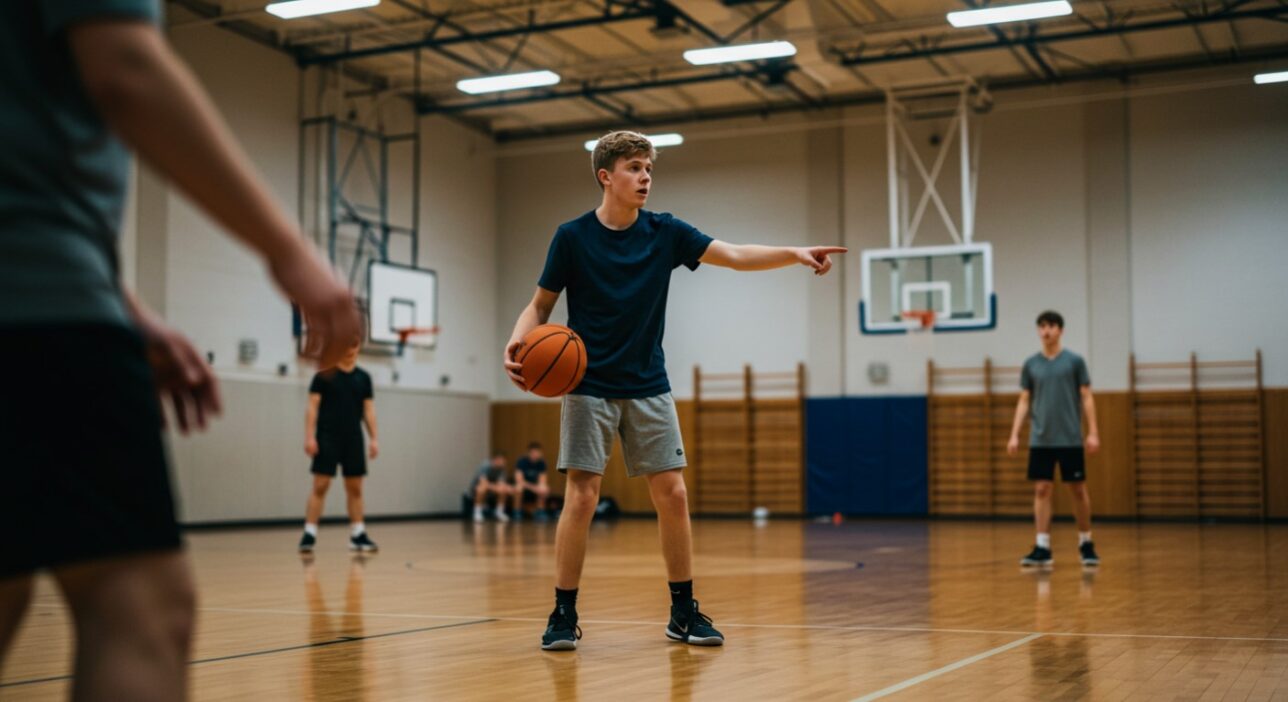
Point guards are often described as the “brains” of the team. Their job is to bring the ball up the court, organise the offence, and set the tone. If the team is an orchestra, the point guard is the conductor.
How They Shape the Game
A good point guard controls pace. Sometimes they sprint the ball up in a fast break to catch the defence off guard. Other times, they slow it down, call a play, and wait for teammates to get into position. They need to read the defence in real time — should they drive to the basket, pass to a shooter, or reset the offence?
Basketball Skills That Define Point Guards
-
Ball handling under pressure: defenders will press them constantly.
-
Court vision: the ability to see passing lanes before they open.
-
Decision-making: knowing when to pass, shoot, or hold the ball.
-
Leadership: pointing, shouting, guiding teammates into place.
Examples from History and Today
-
Magic Johnson: at 6’9”, he broke the mould by combining size with playmaking flair.
-
Chris Paul: known as the “Point God,” a master of mid-range shooting and control.
-
Stephen Curry: redefined the role by adding deep three-point shooting to a point guard’s arsenal.
For Beginners Who Want to Play PG
Start by mastering dribbling. Practise with both hands until you’re comfortable switching in motion. Learn to dribble while looking up, not at the ball. Next, focus on passing — hit a target on your teammate’s chest, not just their general area. A beginner mistake is over-dribbling; remember that a good point guard values the ball and uses the dribble to create, not to waste time.
Shooting Guard – The Scorer
If the point guard sets the table, the shooting guard eats the meal. This position is often filled by the team’s most reliable scorer.
The Scoring Mindset
Shooting guards need to be fearless. They are expected to take big shots, sometimes with defenders draped all over them. But scoring is not just about raw shooting — it’s about moving without the ball, using screens, and finding space where defenders least expect it.
Offensive Responsibilities
-
Knock down jump shots, especially from long range.
-
Drive aggressively to the basket when defenders close out too hard.
-
Stretch the floor, forcing defenders to guard further from the rim.
-
Be ready to take pressure shots late in games.
Defensive Responsibilities
They often guard the opposing team’s best scorer on the perimeter. Quick feet and strong anticipation are crucial, since most possessions start with guards handling the ball.
Famous Shooting Guards
-
Michael Jordan: the gold standard — scorer, defender, competitor.
-
Kobe Bryant: built his legacy on relentless shot-making and footwork.
-
Klay Thompson: modern example of an elite catch-and-shoot specialist.
For Beginners at SG
Work on your shooting form. Consistency matters more than range at first. Practise moving without the ball — run to spots, catch, and shoot in rhythm. Beginners often wait passively for the ball; a true shooting guard creates opportunities by moving constantly.
Small Forward – The Versatile Wing
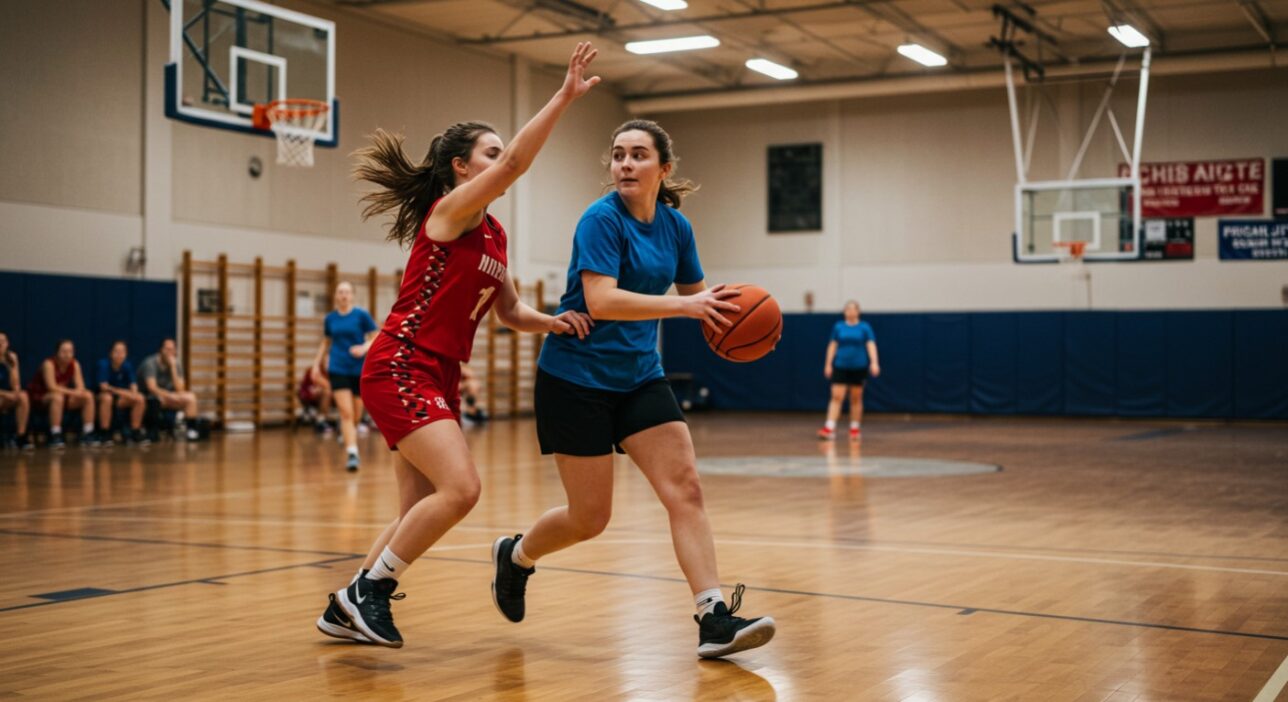
If basketball has a jack-of-all-trades role, it’s the small forward. This position is expected to score, defend, rebound, and adapt to whatever the team needs.
Why They’re Called “Wings”
Small forwards usually operate between the guards and big men, hovering on the wings. From there, they can drive to the basket, cut through the middle, or step back for a jumper.
Versatility in Action
-
Offensively: They slash to the hoop, shoot from mid-range, and sometimes act as secondary playmakers.
-
Defensively: They guard multiple positions — quick enough to cover guards, tall enough to contest forwards.
-
Rebounding: Small forwards often crash the boards when the bigs are tied up.
Legends and Modern Icons
-
Scottie Pippen: known for his all-around game and defensive prowess.
-
LeBron James: combines scoring, passing, and leadership in one package.
-
Kevin Durant: seven feet tall but shoots like a guard, redefining what small forwards can do.
For Beginners at SF
Practise a bit of everything. Work on ball handling, mid-range shooting, and defensive stance. A common mistake for beginners at this position is trying to “do too much.” Focus on contributing consistently in one or two areas — defence and rebounding, for example — while gradually expanding your skill set.
Power Forward – The Enforcer
Power forwards play physically. Traditionally, they were bruisers near the basket, grabbing rebounds and scoring inside. Modern power forwards, however, often shoot from mid-range or even beyond the three-point line, creating the “stretch four” role.
Inside Presence
Historically, power forwards scored with hook shots, put-backs, and post-ups. Their toughness intimidated opponents and gave teams second chances.
The Modern Twist
Today, many power forwards spread the floor with shooting. This forces defenders to step out, opening space inside for guards and centres. Think of them as hybrid players — part traditional big, part outside shooter.
Defensive Role
Power forwards must bang bodies with centres while also being mobile enough to switch onto quicker players. This requires strength and agility in equal measure.
Iconic PFs
-
Tim Duncan: nicknamed “The Big Fundamental,” for his textbook skills.
-
Karl Malone: an unstoppable scorer in the paint.
-
Giannis Antetokounmpo: a modern example who blends size, speed, and guard-like skills.
For Beginners at PF
Start by rebounding aggressively — it’s the quickest way to contribute. Practise boxing out and finishing strong near the rim. Don’t worry about three-pointers right away; focus on layups, put-backs, and mid-range jumpers.
Centre – The Anchor
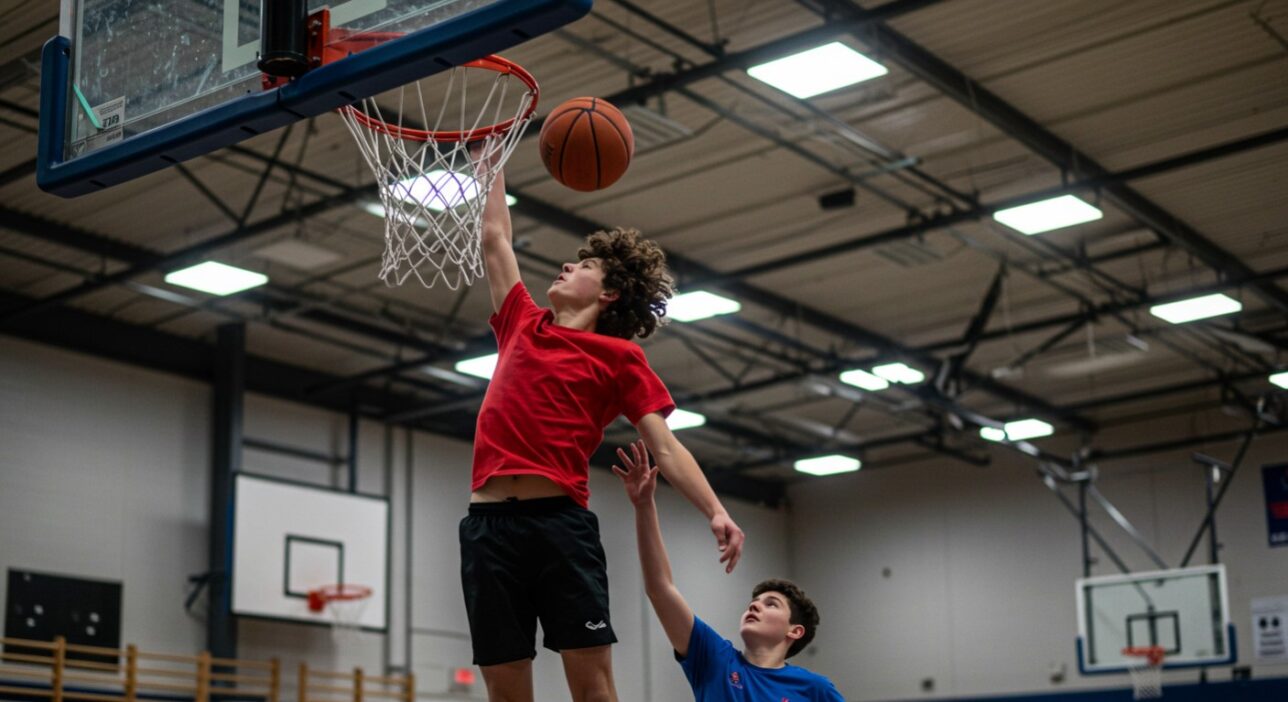
Centres are the tallest players on the court, anchoring both ends. They dominate near the rim, scoring, rebounding, and protecting the basket.
Offence in the Paint
Centres score through dunks, hook shots, and layups. They feast on offensive rebounds, turning missed shots into easy points. Some modern centres, like Nikola Jokić, also act as playmakers, passing from the high post.
Defence and Rim Protection
Centres deter opponents from driving to the hoop. Blocking shots, altering attempts, and grabbing defensive rebounds are their bread and butter. A strong centre can make opponents settle for outside shots instead of attacking inside.
Famous Centres
-
Shaquille O’Neal: pure power, almost impossible to stop near the basket.
-
Kareem Abdul-Jabbar: famed for his unstoppable skyhook.
-
Hakeem Olajuwon: combined footwork, defence, and finesse.
-
Nikola Jokić: modern playmaking centre, changing how the role is viewed.
For Beginners at C
Focus on positioning. Stand tall, protect the paint, and secure rebounds. Practise simple but effective post moves — a drop-step, a hook shot, a strong finish. Beginners often get caught watching instead of reacting; always stay engaged, even off the ball.
How Positions Work Together
A basketball team isn’t just five players — it’s a system. Each position complements the others:
-
Point guards create plays.
-
Shooting guards convert them.
-
Small forwards fill gaps.
-
Power forwards provide strength.
-
Centres anchor the middle.
For example, in a pick-and-roll, the point guard dribbles while the power forward sets a screen. The defence must decide: stop the guard or the big man rolling to the rim. That interplay is where basketball’s beauty lies.
Modern Basketball: Positionless Play
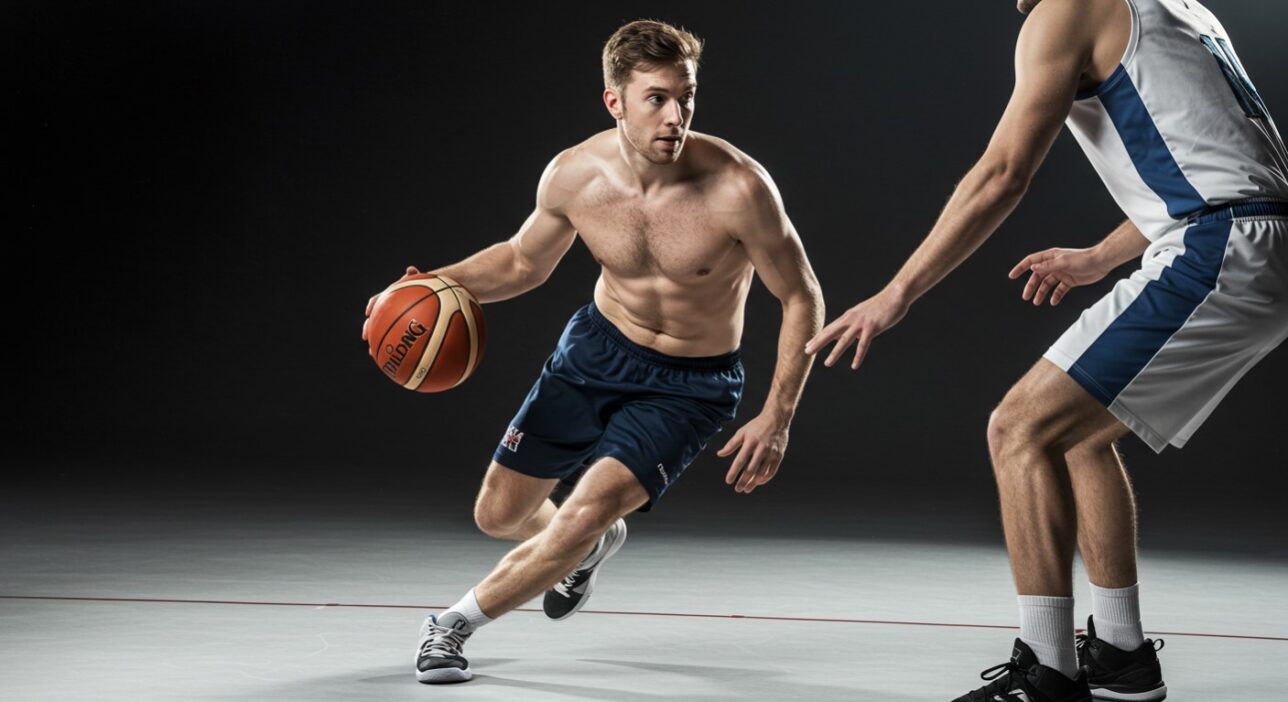
In today’s game, positions blur. Guards rebound, forwards run the offence, and centres shoot threes. Coaches talk about “positionless basketball,” where basketball skills matter more than labels. Players like Giannis, LeBron, and Jokić thrive because they don’t fit neatly into boxes.
Still, the five positions remain useful for learning. They’re the framework that explains who does what — even if the lines are fuzzier now.
Which Position Should Beginners Play?
-
Smaller, quicker players often start as guards, learning dribbling and passing.
-
Taller, stronger players usually play forward or centre, focusing on rebounding and inside scoring.
-
Beginners should experiment with every role in casual games. Playing guard one day and centre the next builds understanding of the whole court.
Conclusion: Understanding Basketball Positions

The five basketball positions — point guard, shooting guard, small forward, power forward, and centre — give structure to the game. Each role has different strengths, but all are interconnected.
For beginners, knowing what each position does helps you step onto the court with clarity. You’ll understand why one teammate is handling the ball, why another is setting screens, and why someone else is guarding the rim. Over time, as you develop your skills, you may discover which role suits you best.
Basketball evolves, but the idea of positions remains. Learn them, try them, and use them to understand how five individuals combine into one team.
